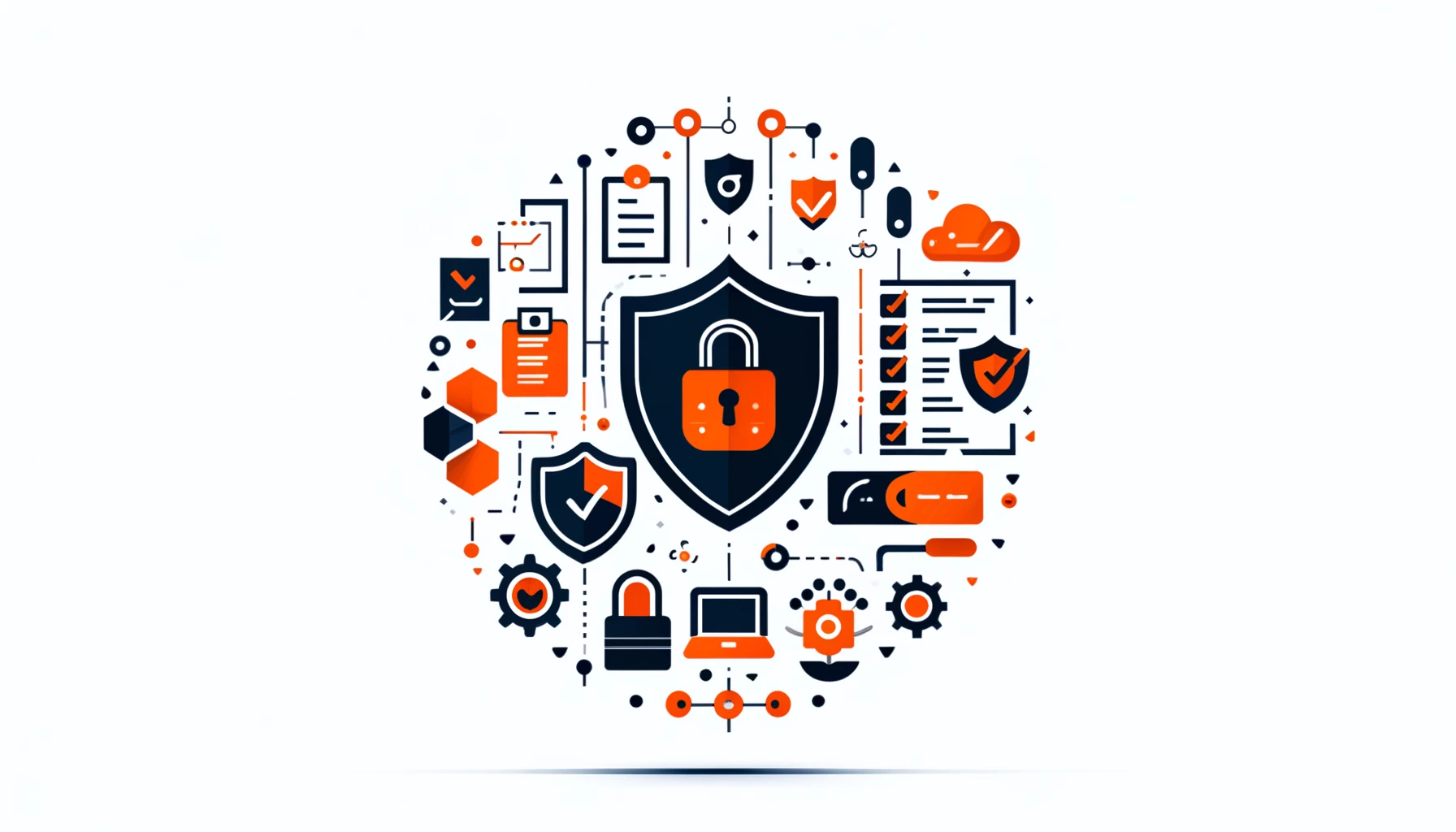
Cybersecurity Frameworks List

Introduction
This article discusses cybersecurity frameworks. We will try to present a cybersecurity frameworks list and a description of the frameworks presented. In today’s digital age, cybersecurity is more crucial than ever. Organizations must have strong cybersecurity measures in place to protect their data. They also need to defend against harmful actions by users in order to stay safe from cyber attacks.
Here, we talk about various frameworks and how open-source software and machine learning can help in using them. Open-source software and machine learning enable adherence to cybersecurity frameworks.
What is a Cybersecurity Framework?
A cybersecurity framework is a set of rules and standards that help organizations handle and minimize cyber risks. These frameworks provide a structured approach to identifying, assessing, and mitigating vulnerabilities in an organization’s IT infrastructure. By adopting a cybersecurity framework, organizations can align their security practices with industry standards and regulatory requirements.
Available Frameworks
Organizations worldwide widely recognize and adopt several cybersecurity frameworks. Here are some of the most common ones:
NIST Cybersecurity Framework
The NIST Cybersecurity Framework is a popular guide that helps organizations strengthen their cybersecurity defenses in an organized manner.
The framework assists organizations in identifying and addressing cybersecurity risks. It helps in protecting systems and data from cyber threats. It also aids in detecting and responding to security incidents. Additionally, it facilitates quick recovery in case of a breach.
The framework is organized into five core functions: Identify, Protect, Detect, Respond, and Recover. The Identify function involves understanding and managing cybersecurity risks, including identifying assets, vulnerabilities, and threats. The Protect function helps defend against cyber threats with measures like access controls, encryption, and security training.
The Detect function looks for security problems and unusual events. The Respond function handles and resolves security incidents promptly. The Recover function helps fix systems and data after a security incident to reduce the impact on the organization.
Overall, the NIST Cybersecurity Framework provides organizations with a valuable tool for improving their cybersecurity posture and reducing their risk of cyber-attacks. Following the framework guidelines can help organizations enhance security, safeguard systems and data, and address security incidents.
ISO 27001 and ISO 27002
The International Organization for Standardization (ISO) has developed two key cybersecurity standards: ISO 27001 and ISO 27002. ISO 27001 specifies the requirements for establishing, implementing, maintaining, and improving an information security management system (ISMS). ISO 27002 provides best practices and guidelines for implementing information security controls.
CIS Controls
The Center for Internet Security (CIS) created 20 important security controls for organizations to improve their cybersecurity. These controls cover various aspects of cybersecurity, including inventory and control of hardware and software assets, continuous threats management, and data recovery capabilities.
Open-Source Software for Framework Compliance
Open-source software can play a crucial role in helping organizations comply with cybersecurity frameworks. Consider these open-source tools:
OSSEC
OSSEC is a free system that watches for suspicious activity and security threats on a company’s computers. It can detect rootkits, malware, and other malicious behavior by analyzing log files, file integrity, and system configurations.
OSSEC helps organizations meet cybersecurity standards like PCI DSS, HIPAA, and GDPR. It is a useful security tool for businesses. OSSEC monitors security events in real-time to detect and alert organizations of potential security incidents as they happen. This proactive approach allows organizations to respond quickly to threats and mitigate potential risks before they escalate.
OSSEC gives alerts and reports on security incidents in real-time, helping organizations understand the threats they face. These reports can help organizations see patterns and trends in security incidents. This helps them make smart decisions about their cybersecurity strategy and use resources well.
By leveraging the capabilities of OSSEC, organizations can enhance their overall cybersecurity posture and demonstrate compliance with industry regulations and standards. This protects important information and improves the organization’s image and trust with customers and stakeholders.
OpenVAS
OpenVAS (Open Vulnerability Assessment System) is an open-source vulnerability scanner that helps organizations identify and assess vulnerabilities in their IT infrastructure. It includes a wide range of tests and plugins to detect security flaws in operating systems, applications, and networks. You can integrate OpenVAS with other security tools and frameworks to create a comprehensive vulnerability management solution.
Snort
Snort is a free tool that watches network traffic for signs of trouble to keep systems safe from cyber threats. The system uses a rule-based language to identify patterns of harmful behavior. It can detect different types of attacks like SQL injection, cross-site scripting (XSS), and buffer overflow. Organizations can customize Snort to meet their specific security requirements and use it to comply with cybersecurity frameworks.
Automating Cybersecurity Tasks with Machine Learning
Machine learning can help with cybersecurity by automating tasks and improving how organizations find and respond to cyber threats. You can apply ML in the following areas:
Anomaly Detection
Suppose an organization has implemented an ML-based anomaly detection system to monitor user behavior. The system trained on historical user activity data, including login times, accessed resources, and typical usage patterns.
The system detects multiple file downloads from a single user account at an unusual time. This raises suspicion. It could indicate unauthorized activity. The system may need to investigate further to ensure security.
The ML model flags this behavior as an anomaly and triggers an alert for the security team to investigate. We discovered that someone took the user’s login details and attempted to steal important data. Thanks to the ML-based system, the organization stopped a possible data breach and followed its cybersecurity rules.
Threat Intelligence
An organization leverages ML techniques to gather and analyze threat intelligence from various sources. The ML model trains to identify important cybersecurity terms, phrases, and patterns in unstructured data. The data comes from sources such as security blogs, forums, and social media posts. One day, the model detects a new malware campaign targeting a specific industry sector.
The ML model extracts relevant information about the malware, including its indicators of compromise (IOCs) and potential mitigation strategies. This current threat intelligence helps the organization stay ahead of security threats. It updates firewall rules and antivirus signatures to protect against new malware. By leveraging ML-driven threat intelligence, the organization can stay ahead of emerging threats and maintain compliance with its cybersecurity framework.
Automated Incident Response
An organization has integrated ML capabilities into its security orchestration, automation, and response (SOAR) platform to streamline incident response processes. The ML model trains to analyze security alerts from different sources like intrusion detection systems, firewalls, and SIEM tools. The ML model automatically assesses the severity and potential impact of the incident based on predefined criteria when it triggers a critical security alert.
If the incident at high-risk, the ML model initiates an automated incident response workflow. This workflow may include isolating affected systems, blocking malicious IP addresses, and notifying relevant stakeholders. Automating incident response with ML can help organizations quickly contain and fix security incidents. This ensures that they are able to follow their cybersecurity rules effectively.
DataSunrise: User-Friendly Tools for Database Security and Compliance
When it comes to database security and compliance, DataSunrise offers a comprehensive suite of user-friendly and flexible tools. DataSunrise provides solutions for data discovery, data masking, database activity monitoring, and compliance with various cybersecurity frameworks, including GDPR, HIPAA, and PCI DSS. It also utilizes both traditional (regular expressions) and ML-based approach for data discovery in schema-based data, image files (OCR) and in semi-structured files.
DataSunrise designed its tools to integrate seamlessly with an organization’s existing infrastructure and can customize them to meet specific security requirements. With DataSunrise, organizations can protect their sensitive data, monitor user behavior, and ensure compliance with industry standards and regulations.
Conclusion
Adopting a cybersecurity framework is essential for organizations to effectively manage and mitigate cyber risks. The NIST Cybersecurity Framework, ISO 27001/27002, and CIS Controls are among the most widely recognized frameworks that provide guidelines and best practices for enhancing cybersecurity posture.
Open-source software, such as OSSEC, OpenVAS, and Snort, can help organizations comply with cybersecurity frameworks by providing robust security controls and monitoring capabilities. Additionally, machine learning techniques can automate various cybersecurity tasks, including anomaly detection, threat intelligence, and incident response, further enhancing an organization’s ability to detect and respond to cyber threats.
For organizations seeking user-friendly and flexible tools for database security and compliance, DataSunrise offers a comprehensive suite of solutions. To learn more about how our tools can help you protect sensitive data and ensure cybersecurity compliance, we welcome you to request an online demo.
